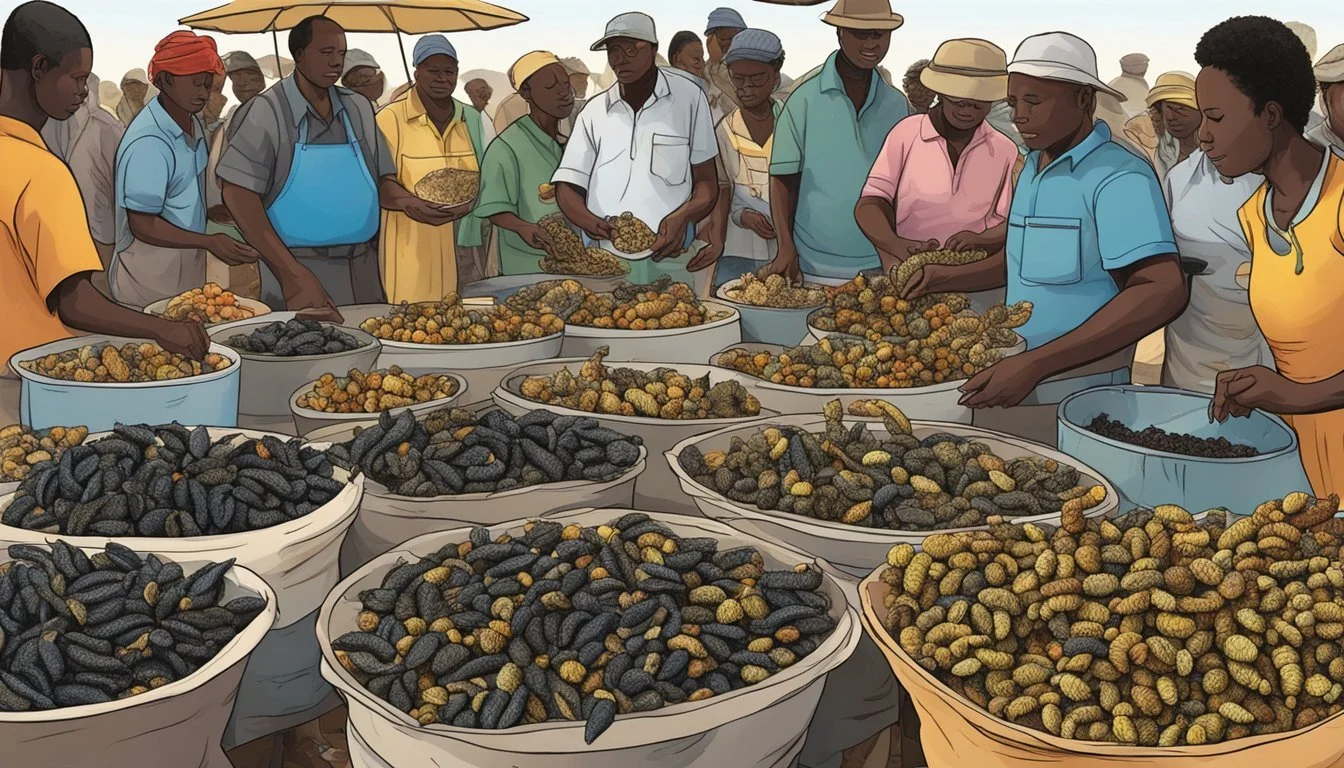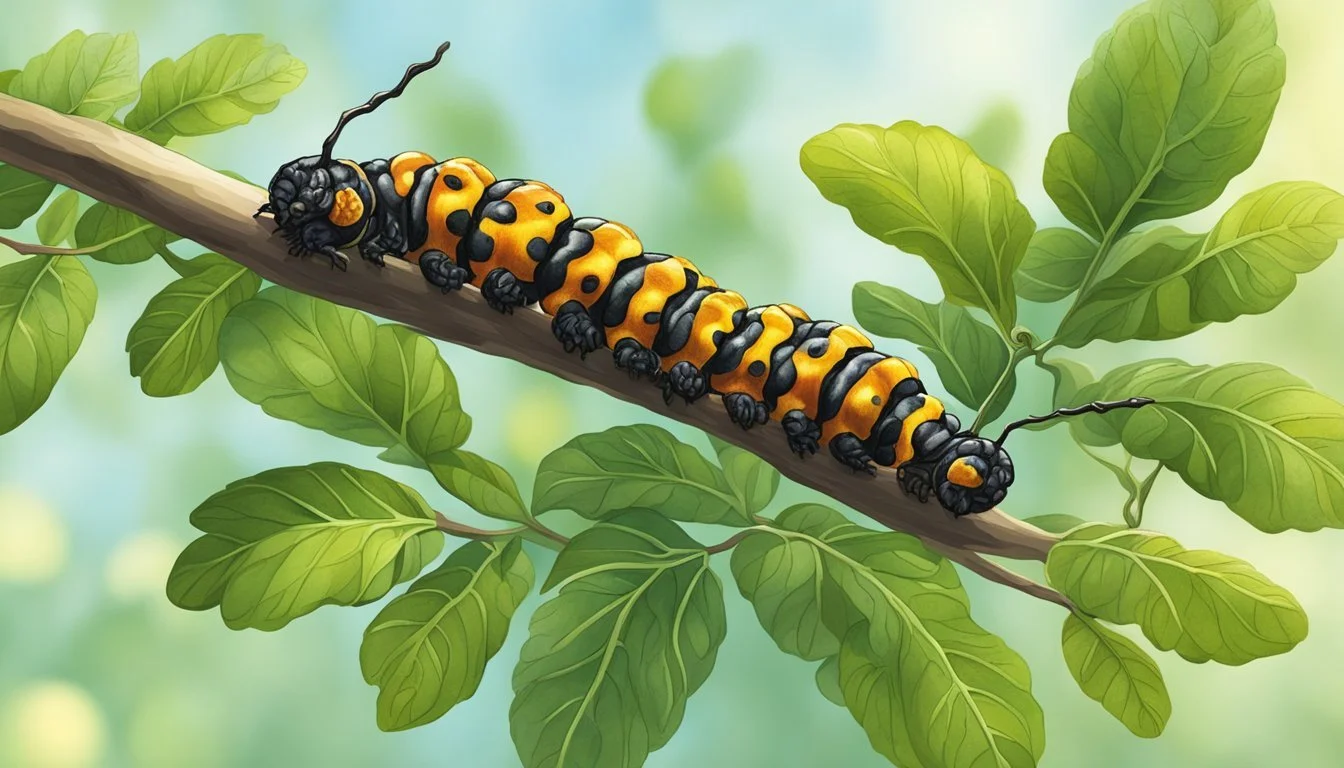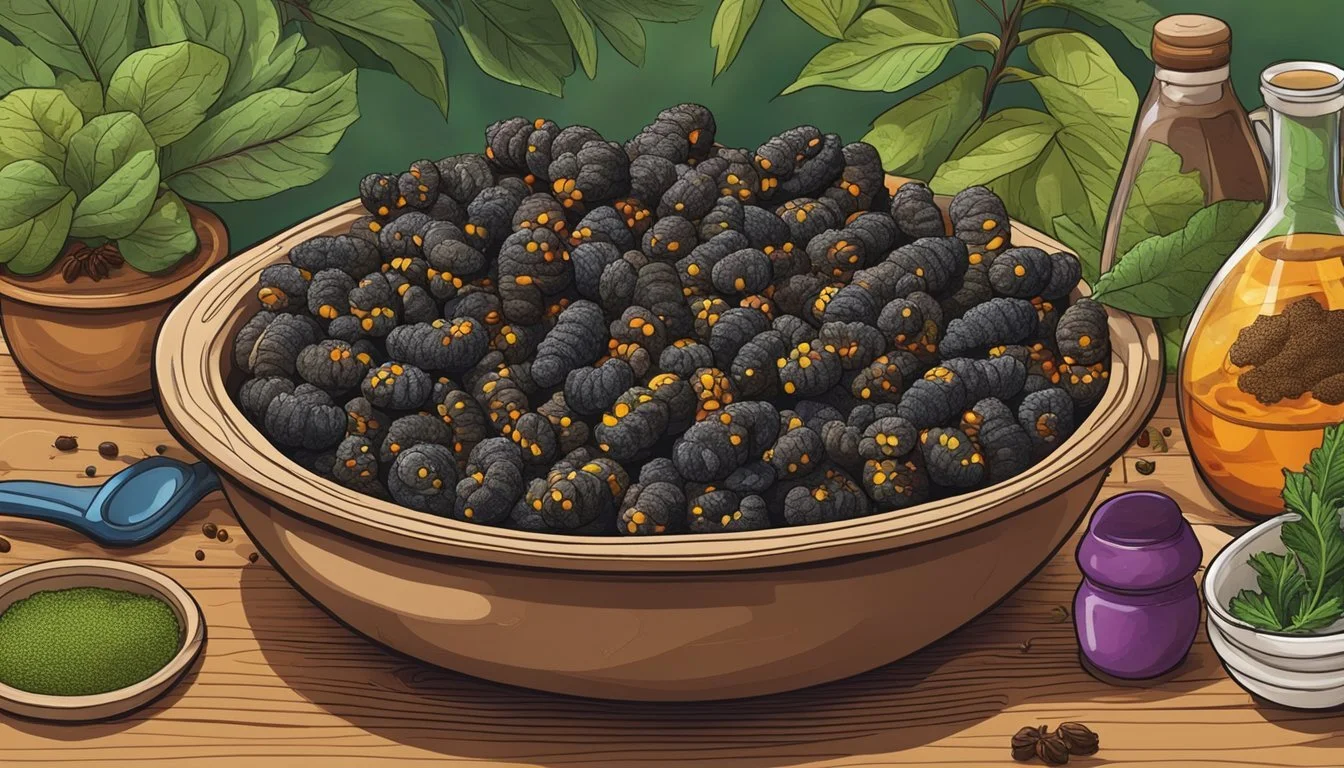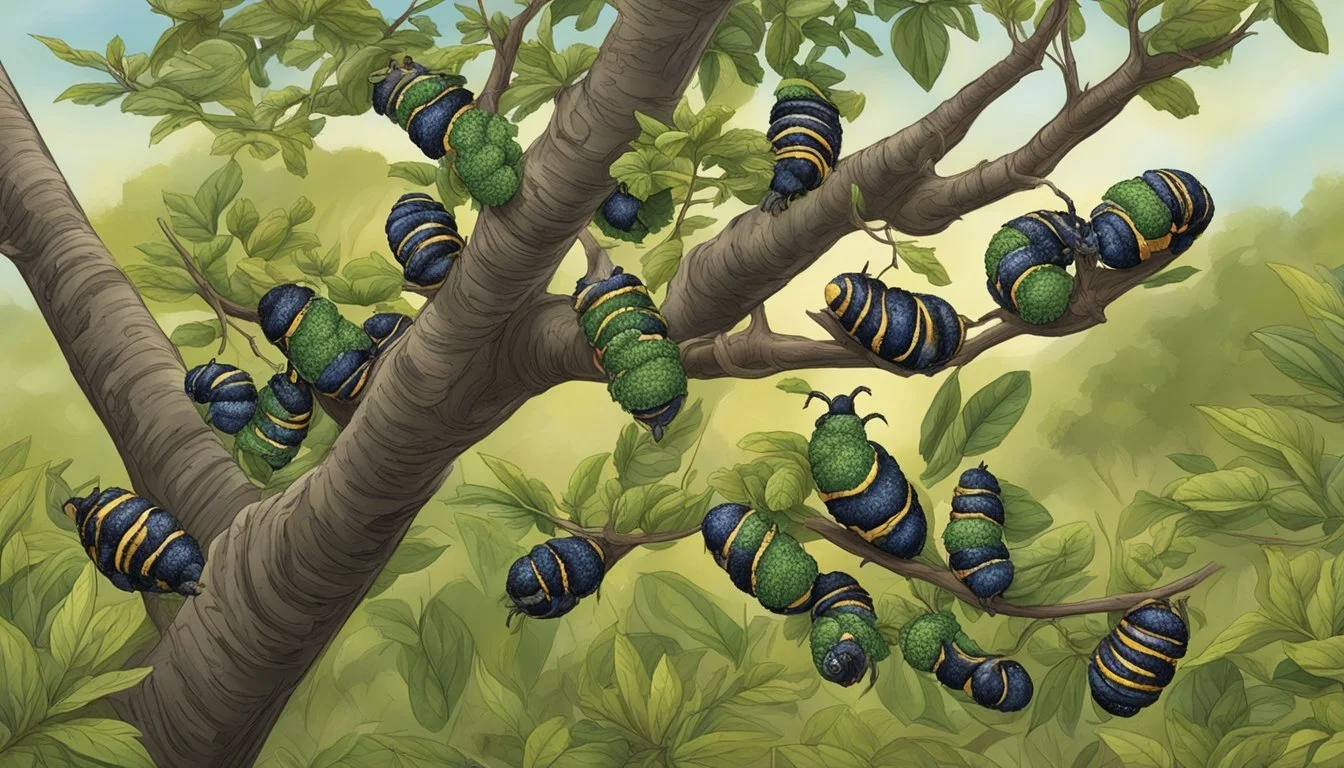Mopane Worms A Sustainable Protein Source from Southern Africa
Mopane worms are a significant source of nourishment for many communities in southern Africa. Although the name suggests otherwise, these creatures are not actually worms but caterpillars of the Emperor Moth, Gonimbrasia belina. They are named after the mopane tree, which provides their main food source and is abundant in areas of Mozambique, Malawi, Zimbabwe, Botswana, and Northern South Africa. The annual harvesting of mopane caterpillars is a cultural practice that involves careful collection and preparation, offering a sustainable source of protein and an income for local families.
The mopane caterpillar is celebrated as a delicacy and a staple food within southern African cuisine. Rich in protein and minerals, they are considered a superfood in rural areas where they play a crucial role in food security. The traditional method of processing involves gutting the caterpillars and then drying or smoking them, which allows for long-term storage. In various communities, mopane worms are consumed dried, rehydrated in stews, or fried until crunchy, serving not just a nutritional purpose but also a culinary one.
Given this context, mopane worms have the potential to be a key player in food security across dry, nutrient-poor regions. Their popularity is on the rise as both an eco-friendly protein alternative and a subject of interest in discussions about climate change resilience. Feeding on the drought-resistant mopane trees, the caterpillars themselves are adaptive to arid climates, presenting a viable option for areas frequently afflicted by food shortages.
Mopane Worms Overview
The Mopane Worm, scientifically recognized as Gonimbrasia belina, is a caterpillar that holds significant economic and nutritional importance in Southern Africa. These caterpillars are principally found within mopane woodlands, relying on the mopane tree (Colophospermum mopane) as their main source of nutrition.
Nutritionally, mopane worms are a powerhouse of nutrients. They provide a substantial amount of protein, essential for muscle repair and growth. Their nutrient profile doesn't end here; these caterpillars are also rich in essential minerals. Here's an overview of their mineral content:
Iron: Crucial for blood production and oxygen transport
Potassium: Necessary for nerve function and muscle contractions
Phosphorus: Important for the formation of bones and teeth
Calcium: Vital for bone health and enzymatic activity
Magnesium, Zinc: Necessary for numerous biochemical reactions and immune system function
Not only are mopane worms densely packed with minerals, but they also contain vitamins such as B vitamins, aiding in energy metabolism and cognitive function.
In terms of fat content, these caterpillars contain healthy fats, which are beneficial for heart health and also provide a concentrated energy source. With the practice of entomophagy — eating insects — gaining popularity globally, the mopane worm has piqued the interest of nutritionists and sustainable food source advocates. This is attributed to their impressive nutritional value and their potential role in food security due to their abundance and ease of harvest from their natural environments.
Biological and Environmental Context
The mopane worm, the larval stage of the emperor moth (Gonimbrasia belina), is indigenous to the vast mopane woodlands of Southern Africa. These caterpillars thrive in regions populated by the mopane tree (Colophospermum mopane), a tree uniquely adapted to these arid environments. The synergy between the mopane worms and the mopane trees is a stunning example of ecological interdependence.
Mopane Trees and Woodlands
Location: Primarily distributed in Southern Africa.
Characteristic vegetation: Predominantly Colophospermum mopane.
Larvae Development and Behaviour
Feeds exclusively on: Colophospermum mopane leaves.
Metamorphosis stages: Larvae eventually pupate to become the emperor moth.
The mopane tree leaves are the sole food source for mopane worm larvae, which play a critical role in the biodiversity of the region. During their life cycle, these worms go through a process of metamorphosis where they pupate and transform into adult moths, continuing the cycle of life and perpetuating the species diversity.
Conservation Efforts
Conservation of mopane worms is a matter of urgency due to their importance as a food resource and their role in the local ecosystems. Habitat loss and over-harvesting are significant threats contributing to the decline in mopane worm populations.
Biodiversity Impact
The existence of mopane worms is a barometer for the health of mopane woodlands. Their presence indicates a robust ecosystem, while their decline serves as an alarm for potential threats to the region's biodiversity. Conservation efforts are aimed at maintaining not only the mopane worms but the intricate network of life within these woodlands.
Cultural Significance
The Mopane Worm holds a venerable place in Southern African culture, deeply woven into the fabric of traditional diets and culinary practices.
Role in Southern African Diets
In Southern Africa, the Mopane Worm, Gonimbrasia belina, is an integral source of protein and a dietary staple for many people. Harvested predominantly in regions where the mopane tree is found, these caterpillars are often collected, dried, and stored for consumption throughout the year. They are particularly important in rural areas where alternative sources of protein may be limited and are valued as a nutritious snack or addition to meals.
Traditional Recipes and Preparations
Preparation of Mopane Worms is rooted in traditional methods passed down through generations. After being harvested, the Mopane Worms are typically gutted and then boiled or sun-dried. Once dried, they can be eaten as a crispy snack, or rehydrated and cooked in a variety of savory dishes. These caterpillars are often fried with onions, tomatoes, and spices, creating a tasty dish that is revered across different communities.
Cultural Names and Terms
The Mopane Worm is known by various names reflecting the linguistic diversity of Southern Africa. In Ndebele, they are called amancimbi, while the Shona people refer to them as madora. Among Tsonga speakers, they are known as finkubala. These terms not only denote the delicacy but also highlight the caterpillar's cultural significance among different ethnic groups, including the Tswana, Venda, and Kalanga. In English, the term "Mopane Worm" is commonly used, but regardless of the language, it remains a cherished component of African culture and cuisine.
Economic Impact
The Mopane worm, an edible caterpillar, is a significant source of income for rural communities in Southern Africa. Harvesting these caterpillars involves both women and children and is crucial for the livelihoods of many families. In this region, Mopane worms serve not only as a food source but also foster growth in local markets, where they are commonly sold.
Income derived from the sale of Mopane worms can be substantial, particularly as this practice does not require traditional farming techniques. Sustainability of harvesting practices is essential to maintain the populations of caterpillars and ensure ongoing economic benefits. Harvesting is often done with consideration to the life cycle of the Mopane worm to encourage regeneration.
Local Markets & Price: Local markets thrive with the sale of dried and fresh Mopane worms. Prices fluctuate based on availability and demand, underscoring their economic influence.
Maintenance & Growth: Maintenance of habitat and careful management of worm populations are necessary to support both ecological balance and economic growth.
Harvesting Practices: Sustainable harvesting practices are taught and encouraged to minimize environmental impact and ensure the continuous availability of this resource.
The Mopane worm harvesting thus not only provides for immediate financial needs but also has the potential to contribute to long-term economic stability in rural areas. The practice supports various facets of the local economy and cultural identity while promoting sustainable interaction with the environment.
Harvest and Production
In Southern Africa, particularly within the rural regions of countries like Botswana, Zimbabwe, South Africa, Zambia, and Namibia, the harvesting of mopane worms is a crucial seasonal activity. Traditionally, local communities collect these caterpillars during the rainy season when they are in abundance. The process typically involves hand-picking the caterpillars from mopane trees, which is labor-intensive but allows for selective harvest ensuring sustainability.
Key Harvest Details:
Location: Mopane woodlands of Southern Africa
Season: Rainy season, optimizing yield
Method: Hand-picking
In countries such as Zimbabwe and Botswana, the practice is not just about subsistence; it represents a significant source of income for rural families. Harvesting these caterpillars is done with care to allow for continued production in subsequent years. For instance, in certain regulated areas like Kruger National Park's mopane veld in South Africa, harvesting quotas are established to prevent over-harvesting.
Sustainability Practices:
Quotas: Ensuring enough caterpillars remain to sustain populations
Regulated Areas: Harvesting from designated zones to prevent habitat loss
The production of mopane worms includes cleaning, boiling, and drying the caterpillars, which are then sold locally or exported. This results in a sustainable source of income for many rural dwellers and a steady supply of this nutritious food for both urban and rural markets.
Production Process:
Cleaning: Removal of guts and inedible parts
Boiling: Softening and disinfecting
Drying: Preservation for storage and transport
Through careful harvest and production practices, communities in Southern Zimbabwe and other regions are able to maintain mopane worm populations while benefiting economically and nutritionally from this resource.
Cooking and Culinary Uses
The mopane worm, known as madora in some regions, is a key ingredient in many traditional Southern African dishes. This section explores how they are prepared and integrated into meals, emphasizing their versatility and rich flavor profile.
Traditional Cooking Methods
Traditionally, mopane worms are harvested and either sun-dried or boiled to achieve preservation and desired texture. Sun-drying is a prevalent method which not only prolongs their shelf life but also concentrates their flavors, resulting in a crunchy texture. On the other hand, boiling the mopane worms softens them and is often a preliminary step before they are incorporated into other dishes. After boiling or sun-drying, the caterpillars may be fried in butter or oil, and various spices are added, such as chili, to enhance the flavor.
Mopane as an Ingredient in Dishes
Mopane worms are a versatile food that can complement many recipes. They might be added to a stew with tomatoes, onions, and local spices, enriching the dish with their savory taste and high protein content. They can also be served as a side dish with pap, a type of maize porridge that is a staple in the region. When cooked, mopane worms absorb the flavors of accompanying ingredients, such as sauce or tomato, and contribute their unique taste to the overall dish. Preparation methods and ingredients vary by region and cook, but the mopane worm remains a cherished and nutritious element of Southern African cuisine.
Nutritional Benefits
Mopane worms, a common name for the caterpillars of the Emperor Moth (Gonimbrasia belina), are a nutritional staple in southern Africa, valued for their high protein content. These caterpillars offer a powerhouse of essential nutrients that are crucial for maintaining a balanced diet.
In terms of protein, mopane worms provide an impressive amount. They contain more protein on a dry-weight basis than many conventional meat sources, making them an excellent food item especially in regions where other protein sources may be scarce or expensive. Their protein includes all the essential amino acids required by the human body, which is vital for muscle repair, immune function, and overall growth.
Mineral-wise, mopane worms are rich in iron, zinc, and magnesium. Iron is crucial for the formation of hemoglobin, which is necessary for oxygen transport in blood. Adequate iron intake prevents anemia and supports physical energy and cognitive functioning. Zinc plays a significant role in immune system health, DNA synthesis, and cell division. Magnesium is involved in numerous biochemical reactions, including nerve function, glucose control, and blood pressure regulation.
Here is a nutritional profile highlight of mopane worms:
Nutrient: Protein
Benefit: Supports muscle growth and immune function
Nutrient: Iron
Benefit: Essential for blood health and energy levels
Nutrient: Magnesium
Benefit: Key for nerve function and managing blood pressure
Nutrient: Zinc
Benefit: Crucial for the immune system and cell division
Mopane worms also contain a balance of fats, which provide a concentrated source of energy and are necessary for the absorption of fat-soluble vitamins. The nutritional value of mopane worms is heightened by the presence of various vitamins and other minerals, each contributing to dietary requirements that promote health and well-being. Their inclusion in diets demonstrates how resourceful and nutritionally dense indigenous foods can be and cements their status as a highly nutritious food source in southern Africa.
Mopane Worms in the Market
Mopane worms, referred to in different regions as macimbi, mashonja, omagungu, ifishimu, and masonja, are a staple in many southern African countries. In local markets, these caterpillars are commonly sold in various forms: fresh, dried, or canned.
Fresh Mopane Worms At the peak of the harvesting season, fresh mopane worms can be found in the bustling local markets. Vendors typically display them in open baskets or buckets, attracting buyers with their colorful appearance. Individuals buying fresh worms usually plan to prepare and consume them shortly after purchase.
Dried and Packaged For convenience and preservation, mopane worms are also sold dried. This form extends their shelf life and allows for easy storage and transportation. In markets, the dried caterpillars are often packaged in clear plastic bags or small containers, showing their curled, shriveled forms.
Canned Delicacies In some areas, mopane worms are available in canned varieties, ensuring year-round availability. Canned worms are precooked and often flavored, offering a quick snack or meal addition. Both tourists and locals may purchase these as a ready-to-eat delicacy or a souvenir.
Nutritional Information Regardless of the form in which they're sold, mopane worms are known for their high protein content, making them a nutritious choice among edible insects. Their popularity in the market is not just due to their taste but also because they offer a sustainable, high-protein food source in regions where such nutrients may otherwise be scarce.
In sum, mopane worms are integral to local markets, available in fresh, dried, and canned forms, celebrated both as a snack and a delicacy, and valuable for their nutritional benefits.
Sustainable Practices and Challenges
Mopane worms, the caterpillar stage of the Imbrasia belina moth, are not only a source of protein for many in Southern Africa but also an important part of local economies. Conservation and sustainability are central tenets of traditional harvesting practices. These practices include:
Selective harvesting: To ensure populations remain stable, harvesters often leave behind a portion of the caterpillars to fully mature.
Rotational harvesting: Similar to crop rotation in farming, this technique allows certain areas to recover, promoting ecological balance.
Use of indigenous knowledge: Local communities rely on traditional knowledge systems to guide sustainable harvest methods.
Challenges
While the demand for mopane worms provides significant income for rural communities, it poses several challenges:
Over-harvesting: With increased commercialization, there's a risk of over-exploitation leading to population decline.
Habitat destruction: Farming activities may disrupt the mopane trees which serve as the worms' primary habitat.
Climate change: Alterations in weather patterns potentially affect mopane worm life cycles and availability.
Market fluctuations: Dependence on local markets makes communities vulnerable to price swings, impacting livelihoods.
Safeguarding the mopane worm requires balancing ecological integrity with the economic needs of local people. Conservation efforts must be continuously adapted to mitigate these challenges, ensuring the mopane worm remains a sustainable resource for generations to come.
Health Considerations
Mopane worms, the caterpillar stage of the emperor moth Gonimbrasia belina, are recognized for their nutritional value. In the diet of those residing in southern Africa, they serve as a pivotal source of protein, which is crucial for muscle development and repair. A single serving of mopane worms is not only high in protein but also delivers a substantial amount of minerals such as iron, calcium, and phosphorus.
Fat content in mopane worms varies, with some processing methods leading to higher fat levels. However, this should be taken into consideration for individuals managing fat intake. Health experts underline the importance of the balance within a diet where mopane worms can contribute beneficial nutrients:
Iron: Vital for the formation of red blood cells and the transportation of oxygen throughout the body.
Calcium and Phosphorus: Essential for strong bones and teeth.
Protein: Integral for bodily functions including the repair and building of tissues.
Despite their benefits, it's important for consumers to be aware of potential allergic reactions or dietary restrictions. Overconsumption should be avoided, given that like any food, balance and moderation are key to maintaining health. As part of a diversified diet, mopane worms can contribute significantly to meeting daily nutritional requirements.
When incorporating mopane worms into the diet, individuals should ensure that they are sourced sustainably and prepared hygienically to maximize benefits and reduce health risks. It remains essential for consumers to consult with nutrition and health professionals when making dietary changes, especially when introducing novel foods like mopane worms.
Comparison to Other Protein Sources
Mopane worms, known scientifically as Gonimbrasia belina, stand out as a significant source of protein within the Southern African diet. They deliver a protein content averaging 55%, rivaling conventional meat sources such as beef.
When compared to beef, which is a common protein source worldwide, mopane worms offer a more sustainable alternative. Beef production is resource-intensive, requiring large amounts of water and feed, whereas mopane worms thrive naturally in their habitat, the mopane woodlands, with no additional resource demands.
The Food and Agriculture Organization (FAO) has emphasized the importance of edible insects in contributing to global food security. Insects like mopane worms are not only rich in protein but possess a well-balanced amino acid profile necessary for human health.
Nutritional Value Comparison:
Protein Source: Mopane Worms
Protein Content: High (55% avg.)
Sustainability: Highly sustainable; low environmental impact
Protein Source: Beef
Protein Content: High
Sustainability: Less sustainable; high environmental impact
In terms of nutritional value, edible insects are often comparable to traditional meats, and they frequently provide essential vitamins and minerals. Additionally, mopane worms contain a good balance of fats, with a higher proportion of unsaturated fatty acids, which are considered healthier for consumption.
The sustainability aspect of mopane worms cannot be understated. Their harvesting is typically less detrimental to the environment, and they are a valuable food source during traditional harvest periods. With global food demands on the rise, mopane worms stand as an example of how alternative protein sources could alleviate pressure on conventional livestock farming.
Preparation Tips and Serving Suggestions
Before cooking, Mopane worms require thorough cleaning. First, the caterpillars' guts are removed by gently squeezing them. Second, they are washed and either sun-dried or parboiled, then dried. This process ensures that the worms are clean and preserves them for later use.
For rehydration, dried Mopane worms are soaked in water until they plump up, a crucial step before cooking. Once rehydrated and ready for cooking, these caterpillars can be prepared in a variety of dishes.
One popular serving suggestion is to enjoy Mopane worms with a maize-based side dish. They make an excellent pairing with pap or sadza, a type of maize porridge that is a staple in many African cuisines. Mopane worms add a rich, meaty texture and flavor when incorporated into these dishes.
A common recipe includes simmering the worms in a sauce of tomatoes, onions, and spices. For added flavor and a touch of heat, one can add fresh chilli and peanuts to the mix. These ingredients not only enhance the taste but also contribute to the nutritional content of the meal.
Here's a simple way to serve Mopane worms:
Rehydrate the Mopane worms by soaking in water.
Sauté onions and tomatoes in oil until soft.
Add rehydrated Mopane worms to the pan.
Season with salt, pepper, and other spices as desired.
Cook until the worms are tender and the flavors meld.
Serve over a bed of steaming pap or sadza, garnished with crushed peanuts.
The result is a tasty and nutritious dish that provides an authentic taste of Southern African cuisine.
Mopane Worms in Modern Cuisine
Mopane worms, the caterpillars of the Emperor moth (Gonimbrasia belina), have transitioned from being a traditional food item to a modern culinary delicacy. These caterpillars are recognized for their high protein content and nutritional value, making them a sustainable choice in the face of global food security concerns, highlighted by organizations like the FAO.
In contemporary cooking, mopane worms are prepared in diverse ways. They are typically fried until crispy, which imparts a savory flavor that lends itself well to both simple and complex dishes. More adventurous chefs integrate these caterpillars into gourmet recipes to create unique snacks and mains.
Taste Profile:
The natural flavor of mopane worms is often described as gamey, with a slight smokiness. They're known to have a salty taste, thus it's advisable to add minimal salt during cooking.
Preparation and Recipe Suggestions:
Frying: Sauté the caterpillars with onions and tomatoes, enhancing flavors with minimal seasoning.
Drying and Rehydration: Mopane worms can be rehydrated after drying, making them a versatile ingredient.
Snacks: Once crispy and seasoned, they serve as a nutrient-dense snack.
Nutritional Insights:
Gram-for-gram, mopane worms provide a substantial amount of protein, essential for muscle repair and growth. They also contain key minerals and vitamins, contributing to a balanced diet.
As these caterpillars gain acclaim in the culinary world, they retain their status as a food of cultural importance while also providing a model for nutritionally rich, ecologically sound eating.
Conservation Efforts and Research
Conservation efforts for the mopane worm, a vital source of protein in Southern Africa, are necessary due to the potential risks posed by habitat loss and climate change. Research indicates significant habitat reduction could occur for the mopane worm, particularly affecting regions like Limpopo Province and Mozambique. Consequently, scientists and conservationists are emphasizing the importance of biodiversity and the sustainability of this natural resource.
Entomophagy, the consumption of insects as food, is deeply entrenched in the diets of rural communities in Southern Africa. As such, mopane worms play a critical role in food security and local economies. Their harvest and consumption are seen not just as a part of traditional diets but also as a route towards sustainable living practices.
Research into the distribution of mopane worms focuses on nutritional factors and the bioactive components that make them a high-value food source. Studies are also exploring the governance and access norms concerning mopane worm harvesting in areas of public, private, and communal land.
To address sustainability concerns, efforts are made to regulate the harvest of mopane worms. This includes setting seasonal harvesting periods and implementing guidelines to avoid over-harvesting. Conservationists advocate for a balance between the essential nutritional benefits provided to the local populations and the conservation of mopane worms to ensure their availability for future generations.
In summary, research and conservation efforts are central to maintaining mopane worms as a sustainable and nutritious food source. By addressing challenges such as habitat loss and unsustainable harvesting practices, the sustainability of mopane worms can be preserved.
Conclusion
The mopane worm, the caterpillar stage of the Emperor Moth (Gonimbrasia belina), is a vital source of nutrition and income in southern African countries. They are predominantly found in regions with mopane trees (Colophospermum mopane), their primary food source. In their mature state, these caterpillars are identifiable by their striped appearance and can be up to 10cm in length.
Nutritional Value: Mopane worms are high in protein, essential amino acids, and minerals, making them a crucial supplement to the diets of many communities. They are traditionally harvested, dried, and consumed, offering a sustainable and accessible source of nutrients.
Economic Importance: Beyond nutrition, the harvest and sale of mopane worms provide financial benefits for rural populations. This trade supports local economies and offers an incentive for the conservation of mopane trees and sustainable harvesting practices.
Environmental Challenges: Climate change poses a threat to the mopane worms' habitat, with projections indicating potential losses in the future. This underscores the importance of environmental management and the need for sustainable harvesting to ensure the continued availability of this resource for future generations.
The mopane worm represents a unique intersection of tradition, nutrition, and ecological significance. It stands as a testament to the region’s resilience and innovation in utilizing natural resources. As challenges arise, it becomes increasingly vital to adopt conservation efforts and sustainable practices to preserve this integral part of southern African culture and ecology.








